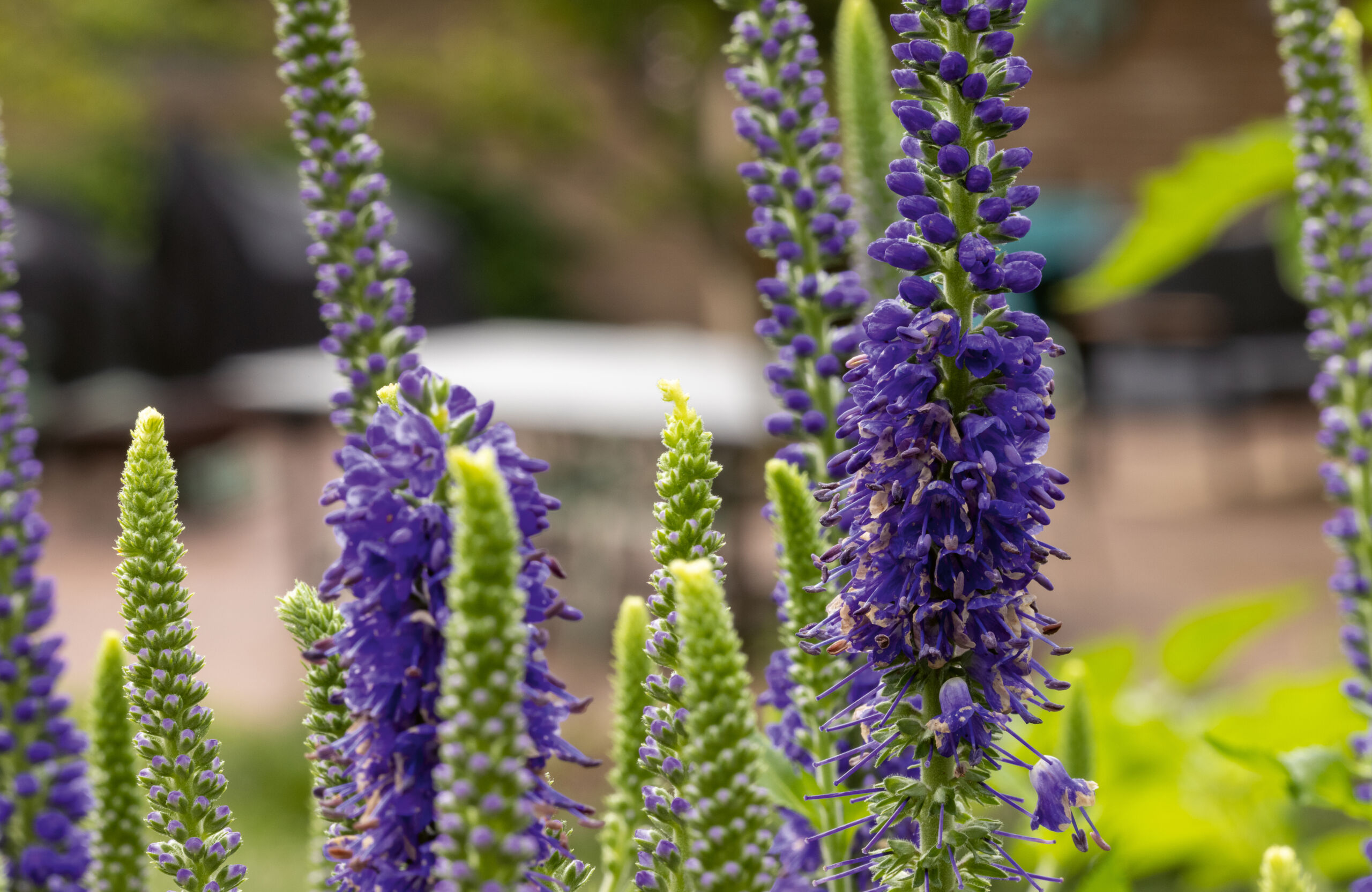
Multiple layers grow in this healthy mid-spring mixed planting of 'Honey Snap' pea. Swiss chard, 'Hakurei' turnip, and dill.
While growing non-vegetable plants may complicate the look of your garden, making it less neat and tidy, the practices of mixed planting and companion planting benefit from this complexity, as it masks crops from potential pests. As interest in pollinator gardens, perennial and native gardens, cutting gardens, medicinal herb gardens, and dye gardens grows, there can be a melding of all these concepts and ideas into one abundant garden space that supports creatures both above- and below ground while also providing resources for us gardeners. It can all be one.
PERENNIAL AND ANNUAL PAIRS

Hummingbirds and butterflies love salvia's tubular blooms. As a bonus, deer and rabbits are repelled by this plant's scent.
SAGE + BROCCOLI
Folk wisdom considers sage a companion for plants in the mustard family such as arugula, kale, and broccoli. The strong scent of sage may confuse cabbageworm moths that like to lay eggs on mustard-family crops.

Hot pink echinacea sustains summer color next to ripening 'Indigo Apple' tomato. Cut back echinacea in midsummer to encourage another flush of bee-, butterfly-, and bird-attracting blooms in early fall.
ECHINACEA + TOMATOES
I love the bright blooms of echinacea (coneflower) that come back each summer. The color complements the green tomato plants and brightens up the bed until the fruit starts to mature. Bees also love echinacea.

The long, purple, white, pink, or blue flower spikes of Veronica, aka Speedwell, are not only attractive to people, but bees can’t get enough of them.
VERONICA + SQUASH
I first found veronica when I was looking for an in-bloom plant that bees might love. In the garden center, the display of veronica plants was literally shaking with bee activity, and it’s been that way in my garden, too. Veronica is a good partner for squash, which needs ample pollination from bees.

As members of the rose family, strawberry flowers have five distinct petals and a hard, fuzzy center that grows and ripens into the sweet red fruit.
STRAWBERRIES + LETTUCE
Strawberries grow a strong root system, so they pair well with lettuce, which is lightly rooted. These spring berries and greens also go together in the kitchen and make a great combo in planting containers.

Low-growing thyme attracts bees when in bloom, making it a great ground cover companion plant for taller crops, including fellow perennials like blueberries.
THYME + PEPPERS
Low-growing thyme can develop well underneath peppers, shading the soil and perhaps deterring some pests with its scent. Growing peppers above thyme also makes good use of space.
Photography by Derek Trimble
Excerpted from The Creative Vegetable Gardener: 60 Ways to Cultivate Joy, Playfulness, and Beauty Along with a Bounty of Food (Storey 2023)
Buy the book and enjoy more of these creative gardening ideas!




